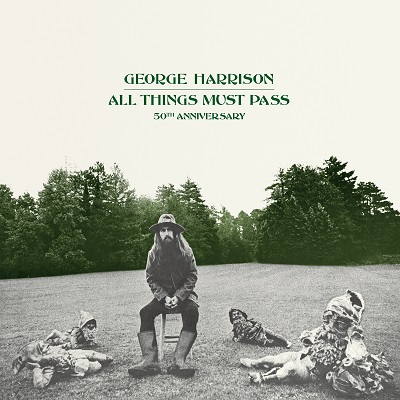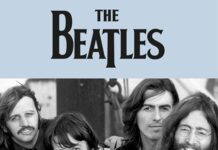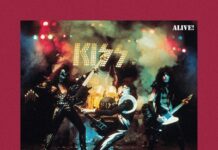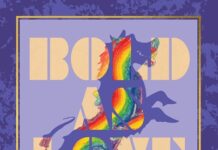During a 2010 interview I did with producer and recording engineer Ken Scott, we spoke about his work with George Harrison. I asked him point-blank who or what was stopping him from doing a reverb-free remix of All Things Must Pass. He was the engineer on the original mix, as well as on the 30th anniversary remaster that came out in 2000 — one of the last things George Harrison was directly involved with before his unfortunate passing in 2001 — so he certainly had the credentials.
I reminded Scott that Harrison had stated he wasn’t all that keen on Phil Spector’s “Wall of Sound” style of production, and that Paul McCartney certainly had no problem remixing Let It Be, undoing the work of the disgraced, imprisoned (and now deceased) producer. “I think without George, it wouldn’t be the same thing,” Scott told me. “If he’d still been alive, I have absolutely no doubt it would have been done. Without him around, I can’t see it. It’s out there the way he originally heard it. That should be testament enough.”
Dhani Harrison, the late Beatle’s son, decided to take matters into his own hands. Recruiting award-winning engineer Paul Hicks, who had been part of the remixing team on the Beatles’ Sgt. Pepper’s Lonely Hearts Club Band, The White Album, and Abbey Road, as well as John Lennon’s Plastic Ono Band and Imagine albums, Harrison decided to have All Things Must Pass upgraded and remixed in both stereo and high-resolution surround sound. To celebrate the album’s 50th anniversary, extra bonus outtakes and demos were dug up to go with the remixes. Packaged in a variety of different formats, including a thousand-dollar wooden box with lots of extras, All Things Must Pass 50th Anniversary Edition boldly goes where no other solo album by George Harrison is likely to go — built with enhancements bound to annoy anti-revisionists.
One of the key concerns Scott said he had with removing or minimizing the reverb was that it could uncover a lot more than what he or Harrison bargained for. “We discussed doing a reverb-free one,” he said. “But we never got into finding out how much the reverb covered up mistakes. There’s a huge possibility that as soon as we take everything off, we might start hearing timing things between instruments, that when it’s all blended together with the reverb, it sounds huge and massive and it works. But take it off, and suddenly, ‘Take it off! We can’t use that.’ That’s another reason George would have to be around for it. At that point, he could have made the judgment call.”
In all actuality, many of the instruments buried in the original mix come to the surface in the new mixes. There are pinches of guitars, vocals, piano, and even the Moog synthesizer that pop out that seasoned listeners admit they have never heard before. Go to the DTS or Dolby Atmos mixes, and be prepared for some special sonic insights. The guitars on “Wah-Wah,” while still awash in reverb, are clearer and more defined. The piano on “Isn’t It A Pity” asserts a new defiance, and the acoustics on “If Not For You” are bouncier. You can either appreciate the crisper sound of the guitars, keyboards and drums on “Run Of The Mill,” or sense the foreboding danger of putting the headphones on for a more intimate mix of “Beware Of Darkness.” You’ll jump for joy hearing the previously indecipherable vocals of Mal Evans at the chorus turns of “Ballad Of Sir Frankie Crisp (Let It Roll).” I could go on about the drums of “I Dig Love” or the powerful punch of “Hear Me Lord,” but I think I’ve made my point. Actually, lest we forget, everything from the Apple Jam sessions needs a thorough re-listen to truly understand where Harrison was coming from at the time. You’ll gain a new appreciation for it. Best of all, purists can rejoice in the fact that the original mixes are still out there, happy to be enjoyed.
The other side of the 50th Anniversary Edition is all the extras. In addition to the 23 original tracks, there are 47 (all except five previously unreleased) demos and outtakes you can rummage through. Of these, the ones that piqued my interest the most were songs that didn’t make it to the original album, like “Going Down To Golders Green,” “Beautiful Girl” and “Cosmic Empire.” Whether it was because they just weren’t up to scruff, or got lost in the shuffle, it’s always fun to stumble upon hidden nuggets like these (bootleg enthusiasts would argue that many of these “unreleased” songs have been available for years, but here collectively within the set, it just makes more sense).
A very limited Uber Deluxe Edition has the album and extras spread out over eight LPs and five CDs, plus an included Blu-ray Disc with the high-resolution stereo, 5.1 surround sound and Dolby Atmos mixes. Unique to this edition is the artisan designed wooden crate, built from the wood of a fallen oak tree on the property of George Harrison’s Friar Park estate. The box also features replica figurines of Harrison and the gnomes featured on the album cover (they make great conversation pieces), two books, a limited edition illustration by musician and artist Klaus Voormann, a copy of Paramahansa Yogananda’s “Light from the Great Ones,” and Rudraksha beads contained in individual custom-made boxes. You can get just the music with the books in Super Deluxe and Deluxe sets, or just the remixed album as a standalone. Not everyone cares for anything more than the actual album, never mind the mix.
As the first box set of any consequence, All Things Must Pass is representative of everything George Harrison ever wanted to do, but was — at that time — never allowed to expand on. While his former Beatles band mates — in particularly, John Lennon and Paul McCartney — squabbled about how exactly they’d break up the world’s biggest musical act, Harrison went for broke and unearthed an unprecedented triple-record set that toppled over $10 and went to Number One, making it — at that time (once again) — the most successful album by a former Beatle. Kudos to George Harrison for successfully going out on his own after he’d already been part of one of the wildest rides in music history.
~ Shawn Perry




















